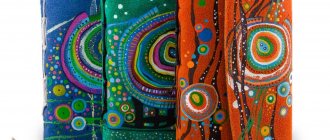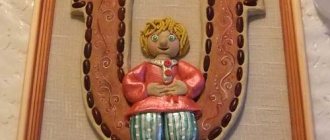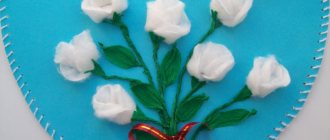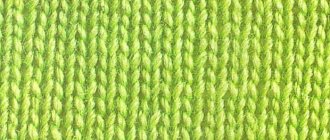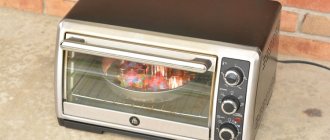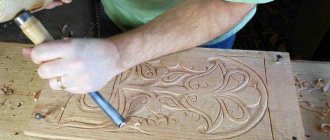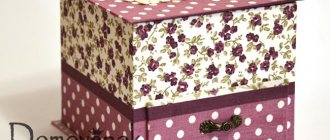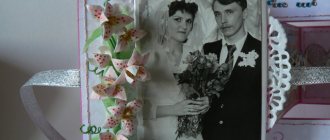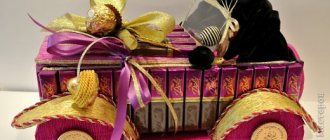One of the most striking folk crafts is house carving, a characteristic feature of facades in ethnic style. The front part of the house is decorated with combinations of plant and geometric patterns, animal figures, and intricate plots. The artistic composition is applied to a wooden surface using a special carpentry tool. Thread elements are usually removable. After applying the image, the carved parts are applied to the platbands and roofing blades. The exception is columns and house doors, when the carving is applied directly to part of the building.
Types of wood used
The choice of wood species suitable for making house carvings yourself is large. Wood is the most commonly used material among folk craftsmen. The most popular species are linden, oak, birch, walnut, pear, and alder. They have the following qualities:
- Linden wood blanks are great for small carved decorative elements. Wood has a soft structure, so it is not suitable for large-sized parts of home decoration. But thanks to its flexibility, it serves as an excellent material for beginners in carpentry.
- Oak elements are used if you want to create an artistic composition that can be stored outdoors for many years. The strength of wood allows you to create massive decorative elements without the risk of deformation or cracking.
- Birch overlays are distinguished by their clear lines. As a rule, small compositions are made from this type of wood, which are then assembled into one whole.
- Walnut is not used in overhead lightweight openwork elements. Wood is too heavy for this. Due to its spectacular appearance after polishing, walnut is used when it comes to massive elements - columns, doors, gates.
- Pear is considered a universal wood species due to its resistance to deformation and cracking. Pear blanks are easily carved with an abundance of small details.
- Alder is not often seen in building decor, as it is used as a base for carved furniture. This is due to the ability to imitate valuable wood species using alder.
Coniferous wood is not easy to use to decorate your home with home carvings. They are fibrous and prone to cracking, but are also popular due to their low cost and pliability. With a competent approach to wood processing, house carvings made of coniferous wood can remain intact for years.
Work procedure for house carving
- First you need to prepare a rough sketch of the house.
- Next, we calculate the required quantity and type of material, and prepare boards of the required size.
- Preparing templates for house carvings. In order to achieve stylistic unity in the design of the house, you should think carefully about the ornament; the details of the composition must certainly be repeated.
- Due to the large volumes of work, it is better to use carving machines.
Photo 3 – Sketches for house carvings
Types of techniques
The main feature of wood carving on platbands, roofs, and facades of houses is the frequent repetition of the storyline and ornaments on different parts of the building. There are several techniques used to decorate houses with carvings. The most common methods are:
- The blind relief technique involves applying a pattern in the form of a non-through relief on a uniform background surface. Images of mythological creatures, plot paintings, and floral ornaments using this technique can be found on pediments, gates, and platbands.
- Flat-relief carving is characterized by knocking out the background, not the design - it remains flat.
- Openwork carving consists of applying a through ornament to the workpiece, which is typical for overlay elements. House wood carving as a result looks like weightless lace.
- The contour technique is great for beginners due to its ease of execution. The drawing is simply outlined with a line with a recess. In this technique, as a rule, complex motives are not performed.
Flat relief carving
This type of carving is considered the most common method of wood processing; it is especially often used in architecture and applied arts. Flat-relief carving is characterized by a cut or approximately 5–7 mm removal of the background of the design. The main feature of such carvings is that the height of the patterns always remains the same over the entire surface and the ornament, at the same time, has a three-dimensional appearance. Patterns can be varied. More often, preference is given to animals, plants, flowers, and can also be found on a fairy-tale theme.
Preparing for work
Before starting any woodworking, you must study the safety rules. The protection of life and health is based on them. For carpentry they are:
- Work is carried out either in the fresh air or in a room with good ventilation.
- A prerequisite is the presence of protective gloves. The respiratory organs are protected from dust with a respirator; when working with the tool, goggles are worn to protect the visual organs from foreign bodies.
- The room should be well lit; it is better to work during daylight hours.
Sculptural carving
A distinctive feature of this carving is, of course, the fact of the presence of a sculpture - either individual figures or several figures nearby can be depicted, these can be people, animals, birds or other objects. In fact, this type is defined as the most difficult, because the master is required to have a three-dimensional vision of the future figure and the ability to maintain the required proportions.
Each of the described methods is actively used to create decorative elements, as well as to decorate products made from wood. Artistic or decorative carvings, which were made by hand, will easily fill the interior of the house with a sophisticated and unique atmosphere, giving comfort and harmony.
Sketching
All parts of the house on which decorative elements will be located must be carefully measured. If artistic skills allow, you can draw a preliminary design of a decorated house, observing the proportions . After this, you can start purchasing wood for work: it is better if it is purchased from a warehouse, dry - then it will not need to be “matured” first. The wood is selected without visible defects. For overhead elements, the thickness of the board should be about 2.5 cm. Next, you can begin to develop detailed sketches of decorative elements.\
Craftsmen who do not have artistic talent are advised to find ready-made templates in specialized literature - they can easily be copied onto paper at the required scale. Sketches of wood carvings with a house pattern can be easily developed in any of the graphics utilities. The sketch is drawn manually in full scale on specially lined paper with a pencil or a pen with a special nib - this can be purchased at art supply stores.
Installation of decorative elements
Before installation, carved elements are painted and covered with a layer of varnish to prevent premature destruction of the composition. The easiest way to attach a part is to nail it with an ordinary nail . The hats must be camouflaged by painting them to match the wood. Carved elements attached with dowels look more aesthetically pleasing. They are not visible from the outside, but the strength of such fastening is high.
Despite the fact that the construction market is flooded with a variety of wood adhesives for external work, it is not recommended to use them. There are no guarantees that the adhesive mixture will provide sufficient strength. Do not forget about the two golden rules of successful decoration with carvings: the principle of specularity must be observed in the ornaments; before final installation, it is extremely important to check the symmetry of the attached parts.
Mastering the craft requires scrupulousness, balance, thoroughness, and leisurely execution of work. The result of the efforts of the master of home wood carving with his own hands is not only beautiful from an artistic point of view, but also large-scale. Any mistake in work can cost many weeks of work; sometimes mistakes cannot be corrected.
Details
Preparatory stage background
The base is usually a board with a large width or several fragments that are glued together end to end. The background element needs to be sanded and cut to the required size. There is a little trick in the preparatory stage of the base, and if you paint the background elements in dark colors and leave the design light (or vice versa), then the perception of the visual type of the product will increase slightly. It turns out that overhead types of elements will attract more attention.
Also, we should not forget that objects made of wood for exterior decoration must be coated with protective compounds so that their appearance is preserved for a long time. Various primers and impregnations, which can always be bought at hardware stores, are perfect here. There is another direction for using carvings on the surface of wood - decorating house facades, carved pieces of furniture and door frames inside the building. In construction stores you can find kitchen units with massive facades. Such pieces of furniture are extremely expensive, and this is where overhead threads come to the rescue.
Certain subtleties
Everyone knows that making, for example, a cabinet door 100% out of wood is more expensive than assembling it from several elements that are repeated (have a similar pattern). Certain manufacturing companies go further and make doors from cheap lumber, which is used to create the body, and the applied carving is obtained by simply gluing wooden elements to create an ornament. This helps create the illusion of an expensive, rich solid wood facade. If everything is done carefully and correctly, then you will never distinguish between a pair of products from a distance of one meter, one of which has an expensive facade, and the other using such technology. In the trim of interior doors, the thread elements of the applied type are simply irreplaceable. Typically, all openings have different parameters in terms of width and height, and therefore it is almost impossible to use any standards for flow production.
The solution is quite simple - the bases, or as we noted above, the backgrounds are made in the same size. They can be easily sawed off after the fact, at home, and the drawings can be glued afterwards. It turns out that we will receive a visually expensive, rich product at an affordable price. Another important advantage is the fact that you can buy the required elements of the design separately and in any quantities. The technique of making flat-relief carving is interesting. By the way, the elements can be used to decorate the door itself, arches in open openings and other objects, forming a unified style for the room as a whole.
Areas of use
In order to make ornaments and patterns of wood carving, only your imagination is required. Wooden furniture items (beds, chairs, sofas and garden elements) are only a small part of the items where it is used. Certain craftsmen use the technique of applied carving to make entire panels. There is no shame in giving such a masterpiece for a birthday or even as a gift to wealthy businessmen. The presence of wooden objects in the home interior brings comfort and also emphasizes the status of the owners. Carving for houses has always attracted people with its incredible sophistication, and today art schools teach lessons in artistic wood carving. Children learn basic techniques in different areas of this art. Modern master designers have become even more likely to include pieces of furniture made of wood in their projects, because wood is the most environmentally friendly material in the construction industry, and therefore it will always be one of the most valuable products.
